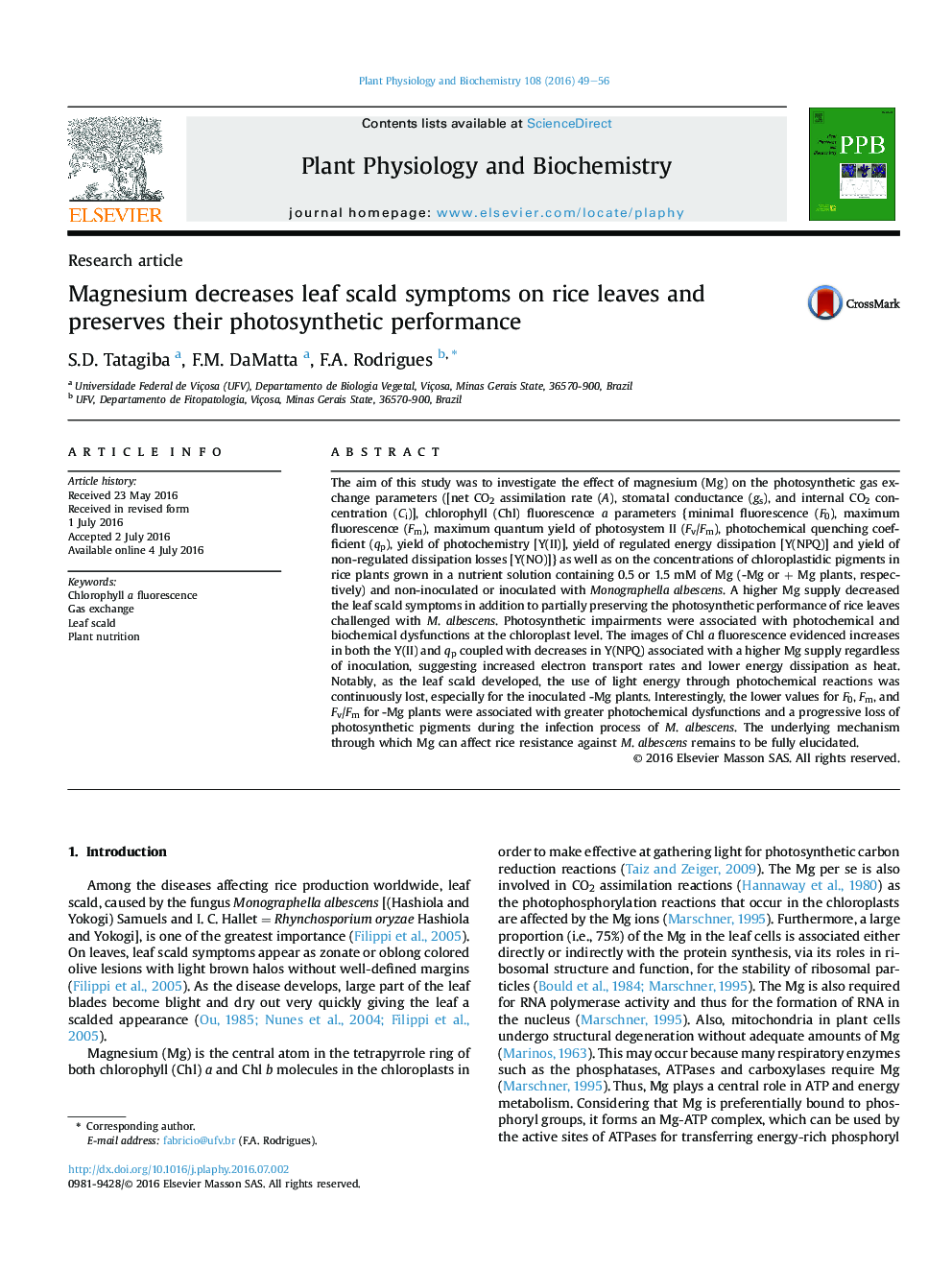| Article ID | Journal | Published Year | Pages | File Type |
|---|---|---|---|---|
| 2014691 | Plant Physiology and Biochemistry | 2016 | 8 Pages |
Abstract
The aim of this study was to investigate the effect of magnesium (Mg) on the photosynthetic gas exchange parameters ([net CO2 assimilation rate (A), stomatal conductance (gs), and internal CO2 concentration (Ci)], chlorophyll (Chl) fluorescence a parameters {minimal fluorescence (F0), maximum fluorescence (Fm), maximum quantum yield of photosystem II (Fv/Fm), photochemical quenching coefficient (qp), yield of photochemistry [Y(II)], yield of regulated energy dissipation [Y(NPQ)] and yield of non-regulated dissipation losses [Y(NO)]} as well as on the concentrations of chloroplastidic pigments in rice plants grown in a nutrient solution containing 0.5 or 1.5 mM of Mg (-Mg or + Mg plants, respectively) and non-inoculated or inoculated with Monographella albescens. A higher Mg supply decreased the leaf scald symptoms in addition to partially preserving the photosynthetic performance of rice leaves challenged with M. albescens. Photosynthetic impairments were associated with photochemical and biochemical dysfunctions at the chloroplast level. The images of Chl a fluorescence evidenced increases in both the Y(II) and qp coupled with decreases in Y(NPQ) associated with a higher Mg supply regardless of inoculation, suggesting increased electron transport rates and lower energy dissipation as heat. Notably, as the leaf scald developed, the use of light energy through photochemical reactions was continuously lost, especially for the inoculated -Mg plants. Interestingly, the lower values for F0, Fm, and Fv/Fm for -Mg plants were associated with greater photochemical dysfunctions and a progressive loss of photosynthetic pigments during the infection process of M. albescens. The underlying mechanism through which Mg can affect rice resistance against M. albescens remains to be fully elucidated.
Related Topics
Life Sciences
Agricultural and Biological Sciences
Plant Science
Authors
S.D. Tatagiba, F.M. DaMatta, F.A. Rodrigues,
